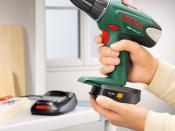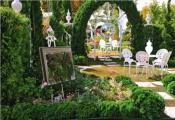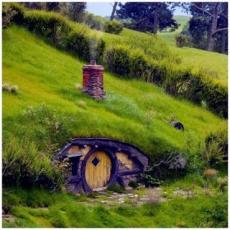Search
Login
Green roof, implementation of the idea
The green roof impresses with its originality, this solution has several advantages, despite the cost of implementation. The technology of creating green roofs was carefully studied in Germany in the 60s, gradually this method of gardening became the most popular throughout Europe. Currently, in Germany alone, there are more than 900 thousand. m2 of roofs covered with greenery. To implement this idea is not difficult if you follow the recommendations of professionals.
Content
- Advantages and disadvantages video
- Views of the green roof. Plants
- Primary requirements
- Green roof technology video
- Roof greening substrate
Advantages and disadvantages
The green roof has many more advantages than disadvantages:
- Green coating prevents excessive heating of the roof, reduces the effects of temperature fluctuations. Protects the roof from frost.
- The coating protects roofing materials from wind, UV rays.
- A layer of green 12 cm thick eliminates noise in the range of 40-50 dB
- It cleans the air - the green roof absorbs 10-20% of dust and produces oxygen.
- It receives part of the rainwater and sends it to the atmosphere as a result of evaporation.
- It has greater fire resistance compared to the classic coating.
- Roof landscaping is economically beneficial - the cost of air conditioning is reduced by 50%. The soil cover layer with a thickness of 20-40 cm has the same insulating properties as mineral wool with a thickness of 15 cm.
A house with a green roof is very aesthetic, it is especially beautiful in those places where there are not enough acres for full landscaping of the site.
The effect is really unique, as evidenced by the green roof of the photo which you now see.

Among the shortcomings, we note the weight of the green roof - up to 500 kg / m2, covering the roof with green is possible only if the building can withstand increased loads. Also, the roof requires maintenance - wastewater treatment, watering, shearing and fertilizer. The cost of materials can be attributed to disadvantages, but there is a caveat, the green roof does not require repair for many years, and the risk of damage to it is minimal.
Types of green roof. Plants
Depending on the possibilities, you can create an intensive or extensive green roof. The intensive one is more like a roof garden, it is planted not only with grass, but also with bushes, dwarf trees, a pond and paths tiled are possible, but this type of landscaping is suitable only for a flat roof. Coating thickness varies from 20 to 100cm, weight from 200kg / m2.
The extensive roof is based on vegetation with low requirements (lawn grass), the coating layer is 15-20 cm. Characteristic plants are offered for each type of green roof.
Plants for an intense roof:
- Barberry
- Cotoneaster
- Privet
- Bloodroot
- Roses
- Spirea
- Chrysanthemums
- Yew
- Juniper
- Bulbous plants
Extensive Roof Plants:
- Sedum
- Clove
- Bells
- Thyme
- Saxifrage
- Thrift
- Dwarf irises
- Awl-shaped bryozoans (Irish moss)
- Young
- Blue fescue
When choosing vegetation, pay attention to the location of the roof - not all plants like partial shade or the scorching sun. Young plantings must be covered for the first two or three winters.

A layer of greenery for arbors is no more than 5 - 10 cm, the maximum load in this case is from 25 to 150 kg.
Primary requirements
Not every roof is suitable for green coverage. You need to know the carrying capacity and quality of building materials of the building, since the weight of the ecological roof is quite large. Pay attention to the inclination of the roof, the use of a green coating is desirable on the roof, where the angle of inclination does not exceed 15, if the slope is greater, it is necessary to make a wooden structure to hold the substrate.

If the roof is flat and planned as a resting place, safety barriers are installed. Any implementation of ideas requires action planning, below we will begin to create a roof in stages.
Green roof technology
The green roof device consists of several layers, this is waterproofing, a protective layer of geotextiles to isolate the roots, drainage - a layer of gravel or expanded clay, a filter layer - to protect the drainage from pollution, a layer of vegetation.
Recommended material for waterproofing is ethylene propylene rubber (EPDM), it is practically impervious and flexible during operation. In the future, waterproofing may be damaged by the roots, to protect it, we use a PVC membrane or a non-woven needle-punched fabric with a density of 300 g / m2, it is also used as drainage with a mound of gravel or sand. Completing the base for vegetation, perforated waterproofing film and geotextiles to protect against pollution and damage to the lower layers.

If the roof is tilted, the next step is to install a wooden frame to prevent the soil from rolling. The wooden structure resembles a checkered table, each cell is filled with a substrate with a layer of not more than 10 cm.

Roof gutters are not covered with a layer of insulation or a layer of greenery, they should be available at any time of the year.
Roof greening substrate
Ordinary garden soil is not suitable, as it tends to settle.

We obtain special soil by mixing compost, expanded clay (or fine gravel) and sand in a ratio of 2: 1: 1, a similar composition is found on the shelves of garden shops. You can also use a ready-made rolled lawn, which greatly simplifies the completion of the green roof.





